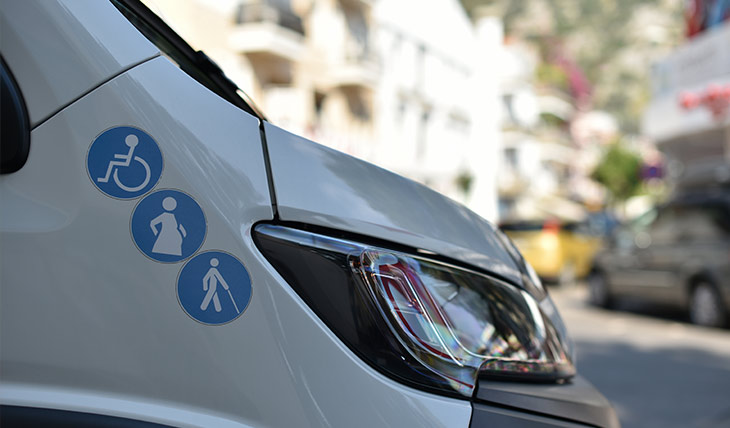Technology is the Bridge to Greater Accessibility

There's no dispute – technology makes many things in life easier, and more accessible. Since the 1990’s, countless technological breakthroughs have resulted in life-changing impacts. Think about it… Google, smartphones, THE INTERNET! It is impossible to imagine life before these things, right? Now that is the power of technology.
Tech for Special Needs
Take tech one step further, and consider its impact on those with special needs. The things that most of us take for granted – like seeing, hearing and mobility, are not possible for many individuals with special needs. But with assistive, adaptive, and other technologies, these individuals can achieve their goals. And for those of us in the transit technology industry, our job is to make transportation easier and more accessible, for everyone.
Getting Around with Paratransit
Take paratransit. For individuals with disabilities, who are unable to get around by traditional fixed-route, public transit, paratransit delivers mobility accessibility. When the Americans with Disabilities Act was introduced in 1990, transit agencies were required to provide paratransit service that was comparable to fixed route transit, but for those with disabilities.
Today, paratransit passengers have special needs and high expectations. And with tight government regulations around the service, paratransit agencies have little margin for error. Technology plays a big role in ensuring that paratransit agencies can improve communication, improve their internal and on-the-road operations, effectively collect useful data, and optimize their scheduling and planning procedures. The bottom line? service goals are very achievable with the right on demand transit software.
Annunciation Devices and ADA Compliance
For most transit services, drivers and agencies are tasked with announcing transfer points with other fixed routes, major intersections, and destination points. This is to help those with special needs orient themselves once they get off a bus. While it seems like a simple enough thing for a driver to accomplish, other demands compete for the driver’s attention. Especially during rush hour, drivers can find themselves busy answering riders’ questions for route and schedule information and fulfilling transfer requests. Making stop announcements can get pushed down the list of essential things a driver is required to do.
Fixed route technology to the rescue! Annunciation devices are tied to in-vehicle, GPS-enabled mobile data terminals (MDT). Without having to worry about when and where it is necessary, drivers can rely on the system to trigger the on-board annunciator system. As well, the same reliable system triggers in-vehicle signage to accompany audio announcements with visual stop information. Agencies can be confident that the automated system is not only keeping their buses on time through synchronization with office fixed route software, but trips are also ADA- compliant.
Wayfinding Widgets and Informational Tech
In the early 90’s wayfinding technology for visually impaired people, was the result of a pilot project between Bay Area Rapid Transit and San Francisco Municipal Transit Agency. Today transit agencies like the Washington Metropolitan Area Transit Authority, include wayfinding technologies in their software purchases. And this trend towards facilitating greater accessibility through technology, is one that will continue to boom across North America.
Wayfinding is not the only obstacle for blind people. Gaining access to information can also be a barrier. But there are several technologies that use human assistance, combined with artificial intelligence technology, to tackle both issues. Apps like SeeingAI by Microsoft uses the camera of a mobile phone to capture an image which the app’s artificial intelligence then attempts to identify and, to read out loud to the user. And the mobile App, BeMyEyes, connects visually impaired people with volunteers who can simultaneously see what a blind person’s mobile phone camera sees and then provide that information to the blind person.
An Accessible and Equitable Future
Tech advances and a drive to make life easier for people with disabilities, are propelling transit agencies to make their services more accessible. With the goal being greater personal independence and dignity for their riders, agencies are embracing technology solutions that did not exist until recently. And since the pandemic first began, on-demand paratransit, and other life-changing tech solutions, have become the safest road to greater equity and accessibility for everyone.
Sources: https://knowledgehub.apta.com/resource/trapeze-group-mobility-on-demand-the-next-frontier-for-paratransit?utm_source=apta&utm_medium=cast&utm_campaign=Recap061521 https://paulcomfort.org/2017/12/02/providing-powerful-paratransit/

